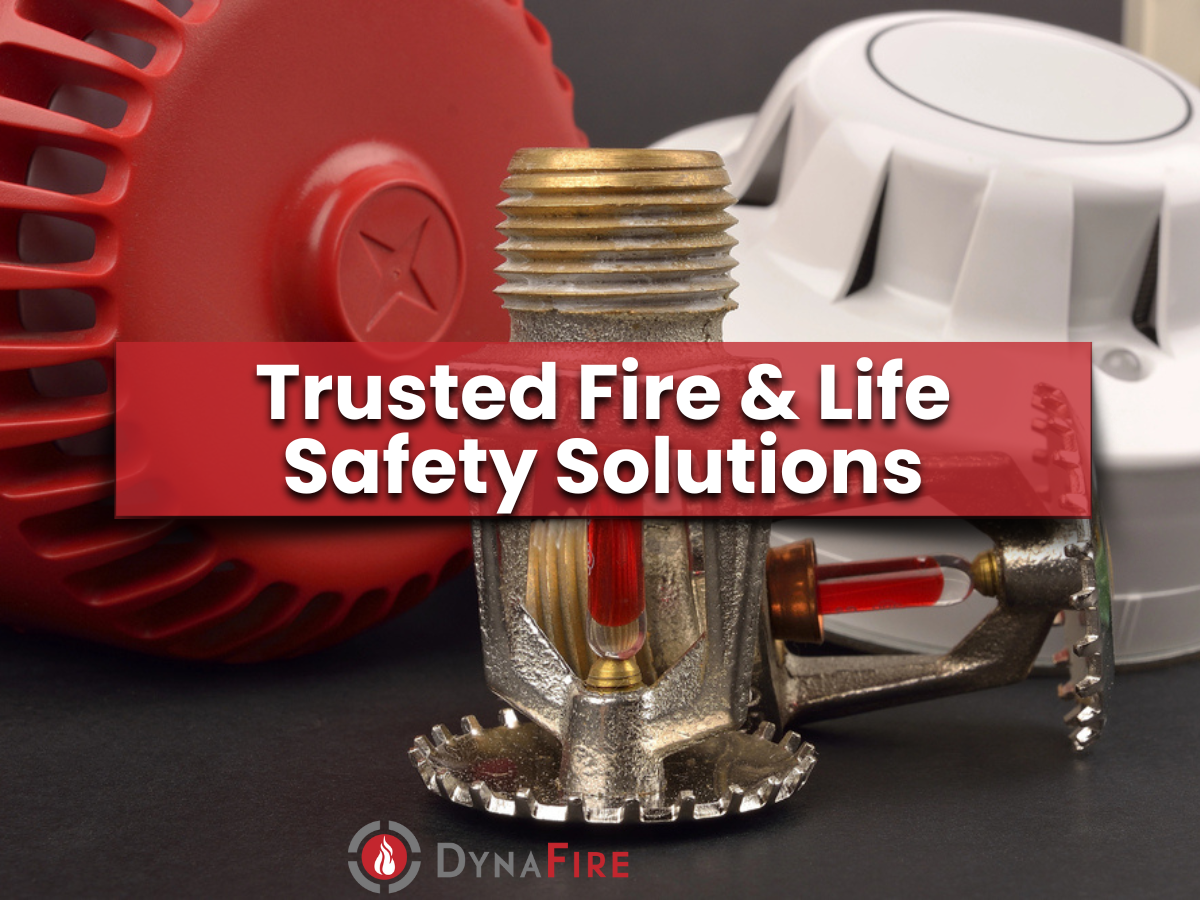Asking the right questions during your walkthrough can help guide your fire protection system inspection and ensure your facility remains safe and prepared.
A walkthrough of your facility’s fire protection system is more than just a box to check—it’s an important part of staying safe and compliant, ensuring your building is ready for emergencies. Whether you manage a medical office, warehouse, or data center, your Fire & Life Safety systems require regular evaluation to ensure they perform when needed, especially ahead of a fire protection system inspection.
Having a qualified fire protection professional walk through your building allows you to confirm that all components—fire alarms, sprinklers, suppression systems, and monitoring—are functioning correctly and meet current code requirements. It is also the ideal time to ask questions that can clarify your system’s strengths, uncover potential risks, and prepare your team for the unexpected.
What’s the Difference Between a Fire Protection System Walkthrough and an Inspection?
A fire protection system walkthrough is typically an informal review conducted with your fire safety provider to assess readiness, ask questions, and address changes like renovations or seasonal risks.
Unlike formal fire protection system inspections, which follow strict NFPA and local code requirements, involve certified testing, and are documented for compliance, a walkthrough is more collaborative and exploratory, allowing you to get ahead of scheduled inspections or facility updates.
Here are some of the most important questions to ask during a fire protection system walkthrough:
1. Is My System Fully Code-Compliant?
Start with the basics. Ask your provider if your fire protection system meets the latest codes from the NFPA, AHJ (Authority Having Jurisdiction), and local building regulations. If there have been recent citations or deficiencies, confirm that they have been addressed and closed out.
2. How Is My Fire Alarm System Monitored?
You may be vulnerable during service outages if your system is still monitored via traditional phone lines or cellular connections. Ask about DynaNet, DynaFire’s proprietary wireless mesh network. Unlike cellular monitoring, DynaNet delivers fast, redundant, storm-resilient alarm communication that stays online when other systems fail.
3. What Happens If There’s a Power or Cellular Outage?
Reliable communication during emergencies is non-negotiable. Hurricanes, storms, and power failures can knock out traditional systems. Find out how your current setup handles outages—and whether your facility would benefit from upgrading to a system like DynaNet, specifically designed for critical infrastructure and high-risk zones.
4. Are All Devices Functional and Properly Maintained?
Walkthroughs are an excellent opportunity to check the status of every component, from smoke detectors and pull stations to sprinkler heads and suppression tanks. Ask when each system was last tested, what the results were, and whether your provider follows a set maintenance schedule to stay ahead of problems.
5. What’s the Current Evacuation Plan and Is It Adequate?
Fire safety is not just about systems—it’s about people. Ensure your evacuation routes are clearly posted, illuminated, and not obstructed. Ask your provider whether your evacuation strategy is still valid based on changes to your facility’s layout or use.
6. How Quickly Are Emergency Services Notified?
Response time can mean the difference between a controlled incident and a significant loss. Ask how fast your system alerts local fire departments when an alarm is triggered. If delays are possible, it may be time to explore monitoring upgrades.
7. If We Expand or Remodel, Will the System Need Changes?
Facilities are rarely static. If your building is expanding or undergoing renovations, discuss how occupancy, layout, or use changes could affect your fire system. Planning ahead can prevent code violations and costly retrofits later.
8. Who Is Responsible for Ongoing Service and Maintenance?
Clarify what falls under your provider’s service agreement and what you may be expected to handle in-house. A full-service fire protection partner should manage testing, inspections, repairs, and reporting, ensuring nothing slips through the cracks.
A well-conducted walkthrough can help identify issues before your next fire protection system inspection, giving you time to address deficiencies and avoid compliance setbacks.
Stay Prepared with the Right Fire Protection Partner
A walkthrough is more than a routine check—it’s a proactive way to make sure your systems are ready when you need them. By asking the right questions, you can uncover hidden vulnerabilities, confirm compliance, and determine whether it is time to schedule a formal fire protection system inspection.
At DynaFire, we simplify the process. From thorough inspections to advanced monitoring with DynaNet, our team helps businesses in Florida and Georgia protect what matters most with confidence and clarity.
Whether you’re preparing for hurricane season, planning a renovation, or simply want peace of mind, contact us today to schedule a walkthrough and ensure your Fire & Life Safety systems are ready when it matters most.






